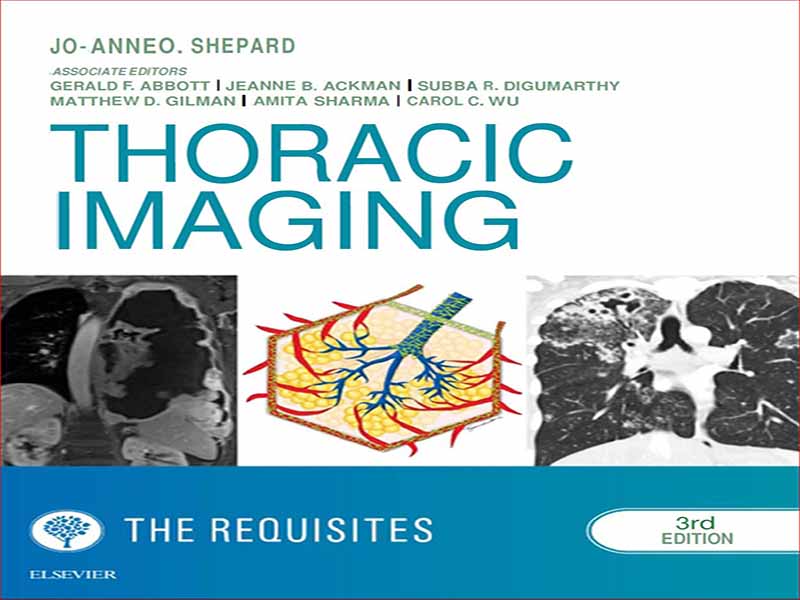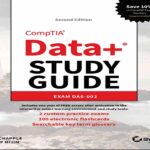- عنوان کتاب: THE REQUISITES Thoracic Imaging
- نویسنده: James H. Thrall, MD
- حوزه: تصویربرداری پزشکی, قفسه سینه
- سال انتشار: 2019
- تعداد صفحه: 501
- زبان اصلی: انگلیسی
- نوع فایل: pdf
- حجم فایل: 29.0 مگابایت
مایه خوشحالی است که به معرفی نسخه سوم رادیولوژی قفسه سینه: الزامات کمک کنم. تصویربرداری قفسه سینه سنگ بنای عمل رادیولوژی است که بیش از هر بخش دیگر از تخصص های فرعی در رادیولوژی بیماران را تحت تاثیر قرار می دهد. بسیاری از همان نوآوریها و پیشرفتهای فنآوری که در چندین سال گذشته سایر حوزههای رادیولوژی را به جلو سوق داده است، چشمانداز تصویربرداری قفسه سینه را نیز بهطور اساسی تغییر داده است و انتشار نسخه سوم را به موقع و مهم کرده است. دکتر Jo-Anne O. Shepard ویراستار نسخه جدید است و تیم فوق العاده ای از ویراستاران و نویسندگان را گرد هم آورده است. در این راستا، ویرایش سوم رادیولوژی قفسه سینه: الزامات نشان دهنده روند مهمی در نویسندگی است. کتاب های اصلی هر کدام توسط تعداد کمی از مردم نوشته شده اند که بسیاری از آنها تنها یک یا دو نویسنده دارند. با گذشت زمان، وسعت و پیچیدگی هر موضوع به حدی افزایش یافته است که اکنون رویکرد چند نویسنده برای سطح تخصص مورد نیاز مناسب است. پزشکان جرالد اف. ابوت، جین بی. آکمن، سوبا آر. دیگمورتی، متیو دی. گیلمن، آمیتا شارما و کارول سی وو به عنوان دستیار ویراستار برای این نسخه خدمت می کنند. نویسندگان دیگر مشارکت کننده عبارتند از: Manudeep Kalra، Alexi Otraji، Melissa Price، Bojan Kovacina، Lan Qian (Lancia) Guo، Brett W. Carter، Mylene Truong، Christopher M. Walker، Susan Gutschow، Shaunagh McDermott، Efren J. Flores، Laura L. ایوری، جان دبلیو. نانس، هریستینا ناچوا، توماس کیمیگ، جاناتان چانگ، ریدهوانا حسین، ویکتورین وی. میوز، میلنا پترانوویچ، فلوریان جی. فینتلمن، بردلی اس. سابلوف و جاستین استوول. تصور گروه قوی تری از مشارکت کنندگان دشوار است. باید به دکتر شپرد و همکارانش به خاطر تولید کتابی باکیفیت که برای خواننده هم کاربردی و هم قابل مدیریت باشد تبریک گفت. قالب و طرح رادیولوژی قفسه سینه: الزامات عمدتاً با فصول اولیه در مورد تکنیک و آناتومی طبیعی و فصل هایی که بیماری ها و شرایط اصلی را پوشش می دهند دست نخورده باقی می مانند. با این حال، چندین فصل جدید به پیشرفتهای فناوری میپردازد و پوشش عمیقتری از کاربردهای بالینی تخصصی را ارائه میدهد. به عنوان مثال، در فاصله زمانی از انتشار ویرایش دوم رادیولوژی قفسه سینه: نیازمندی ها، آزمایش ملی غربالگری ریه (NLST) نشان داد که غربالگری سرطان ریه در یک جمعیت مشخص، جان انسان ها را نجات می دهد. این یک نقطه عطف مهم در عمل پزشکی بود که فرصتهای مهمی را برای رادیولوژیستهای قفسه سینه ایجاد کرد، اما همچنین چالشهایی را در رابطه با اتخاذ بهترین شیوهها برای غربالگری و استفاده صحیح از سیستم مرحلهبندی سرطان ریه ایجاد کرد. به همین ترتیب دو فصل در این کتاب وجود دارد که به این مسائل می پردازد، یکی در مورد نمایش و دیگری در مورد صحنه سازی. تحول دیجیتال در رادیولوژی اکنون به طور قابل ملاحظه ای کامل شده است. این تبدیل به طور کامل در ویرایش سوم رادیولوژی قفسه سینه: شرایط لازم، شامل فصلی که PET/CT و PET/MR را پوشش میدهد، گنجانده شده است. در حالی که PET/CT در تصویربرداری قفسه سینه، به ویژه برای تشخیص و پیگیری سرطان، به خوبی تثبیت شده است، پتانسیل PET/MR بهتازگی در دسترس است. بسیاری از فصول با عناوین آشنا در حال حاضر با تصاویر دیجیتالی با تأکید متناظر بر روشهای مقطعی با وضوح بالا به صورت غنیتر نشان داده شدهاند. بهبودهای مرتبط در هر دو کیفیت تصویر و قابلیت های تشخیصی برجسته شده است. در نظر گرفته شده است که کتابهای نیازمندیها جامع نیستند. متون مرجع «مگا» وجود دارد که موارد نادر و غیرعادی را فهرستبندی میکند و جنبههای مختلف بحث و جدل را ارائه میدهد. در عوض، کتابهای نیازمندیها برای ارائه اطلاعاتی در مورد شرایطی است که رادیولوژیستها هر روز میبینند، شرایطی که هسته اصلی عمل رادیولوژی هستند. در واقع، یکی از درخواستهایی که از نویسندگان میشود این است که چیزهای غیرعادی یا مبهم را جستجو نکنند، بلکه آنچه را که هر روز در ایستگاه کاری به ساکنان خود آموزش میدهند، در کتاب قرار دهند. از آنجایی که نویسندگان در زمینه های مربوطه خود متخصصان با تجربه هستند، این مهم ترین مطالب قابل پیش بینی است. سری Requisites اکنون بیش از 25 سال از عمر آن می گذرد و به هزاران رادیولوژیست خدمت کرده است. کتاب ها برای بسیاری از مردم دوستان آشنا و قابل اعتماد هستند. امید و انتظار من این است که کارآموزان رادیولوژی و همچنین رادیولوژیست های شاغلی که به دنبال تجدید دانش خود هستند، نسخه سوم رادیولوژی قفسه سینه: الزامات را متن مفیدی بیابند.
It is a pleasure to help introduce the Third Edition of Thoracic Radiology: The Requisites. Thoracic imaging is a cornerstone of radiology practice that touches more patients than any other area of sub-specialization in radiology. Many of the same technological innovations and advancements that have propelled other areas of radiology forward in the last several years have also substantially changed the landscape in thoracic imaging, making the publication of the Third Edition timely and important. Dr. Jo-Anne O. Shepard is the editor of the new edition and has assembled a terrific team of co-editors and authors. In this regard, the Third Edition of Thoracic Radiology: The Requisites reflects an important trend in authorship. The original books were each written by a small number of people, many with only one or two authors. Over time, the breadth and complexity of each topic have increased to the point that a multi-author approach is now appropriate for the level of expertise required. Doctors Gerald F. Abbott, Jeanne B. Ackman, Subba R. Digmurthy, Mathew D. Gilman, Amita Sharma, and Carol C. Wu serve as Associate Editors for this edition. Additional contributing authors include Manudeep Kalra, Alexi Otraji, Melissa Price, Bojan Kovacina, Lan Qian (Lancia) Guo, Brett W. Carter, Mylene Truong, Christopher M. Walker, Susan Gutschow, Shaunagh McDermott, Efren J. Flores, Laura L. Avery, John W. Nance, Hristina Natcheva, Thomas Keimig, Jonathan Chung, Rydhwana Hossain, Victorine V. Muse, Milena Petranovic, Florian J. Fintelmann, Bradley S. Sabloff and Justin Stowell. It is difficult to imagine a stronger group of contributors. Dr. Shepard and her co-authors are to be congratulated on producing a high-quality book that will be both practical and manageable for the reader. The format and layout of Thoracic Radiology: The Requisites remain largely intact with early chapters on technique and normal anatomy and chapters covering major diseases and conditions. However, several new chapters address advances in technology and provide for deeper coverage of increasingly specialized clinical applications. For example, in the interval since publication of the Second Edition of Thoracic Radiology: The Requisites, the National Lung Screening Trial (NLST) demonstrated that screening for lung cancer in a defined population saves lives. This was a major milestone in medical practice that has created important opportunities for thoracic radiologists but also challenges related to adopting best practices for screening and correct application of the lung cancer staging system. Correspondingly there are two chapters in this book that address these issues, one on screening and one on staging. The digital transformation in radiology is now substantially complete. This transformation is fully incorporated into the Third Edition of Thoracic Radiology: The Requisites, including a chapter that covers PET/CT and PET/MR. While PET/CT is well established in thoracic imaging, especially for cancer diagnosis and follow-up, the potential for PET/ MR is just becoming more widely available. Many of the chapters with familiar titles are now more richly illustrated with digital images with corresponding emphasis on highresolution cross-sectional methods. The associated improvements in both image quality and diagnostic capabilities are highlighted. The Requisites books are not intended to be exhaustive. There are “mega” reference texts that catalog rare and unusual cases and that present different sides of controversies. Rather, The Requisites books are intended to provide information on the conditions that radiologists see every day, the ones that are at the core of radiology practice. In fact, one of the requests to authors is to not look up anything unusual or obscure but to put in the book what they teach their own residents every day at the workstation. Since the authors are experienced experts in their respective areas, this is predictably the most important material. The Requisites series is now well over 25 years old and has served thousands of radiologists. The books are familiar and trusted friends to many people. It is my hope and expectation that radiology trainees as well as practicing radiologists seeking to refresh their knowledge will find the Third Edition of Thoracic Radiology: The Requisites a useful text.
این کتاب را میتوانید بصورت رایگان از لینک زیر دانلود نمایید.
Download: THE REQUISITES Thoracic Imaging



































نظرات کاربران